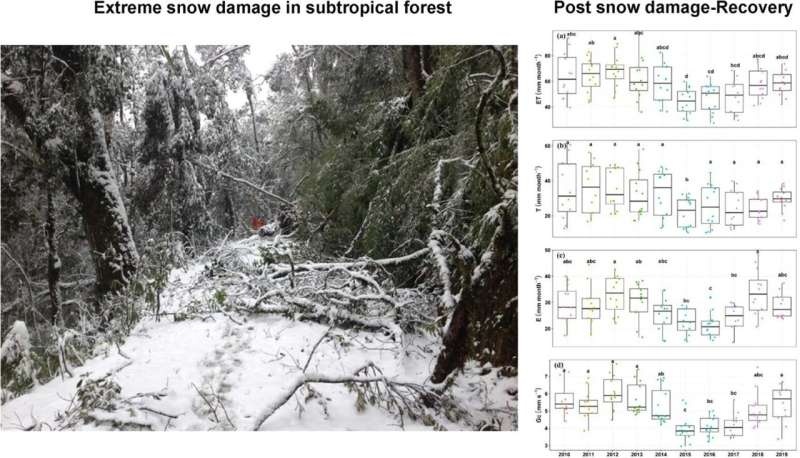This study explores the asynchronous recovery of water fluxes in a subtropical forest after a severe snow event, providing insights into the adaptive capacity and resilience of forest ecosystems.

Water Cycle of the Forest Unraveled
Forests are critical to the global water cycle, and yet we know little about how forests respond to extreme weather events. The study, carried out by researchers from the Xishuangbanna Tropical Botanical Garden (XTBG) of the Chinese Academy of Sciences, focused on the Ailaoshan Mountain National Nature Reserve, which plays an important role in providing water resources for Lancang River basin in southwest China.
This subtropical forest sustained major damage in 2015 after a heavy snowfall. The ongoing research monitored how the water fluxes — such as evapotranspiration, transpiration and evaporation — reacted to this extreme disturbance and how long it took the forest to recover over subsequent years.
Measuring the Resilience of the Woods
Based on 10 years of eddy covariance observations from 2010 to 2019, the researchers quantified the disturbance effects of snow disaster on forest water cycle as well as its recovery process. The results showed that the LAI diminished by 49% versus pre-disaster levels during the snow disaster year, resulting in having prominent reduced evapotranspiration (ET), transpiration (TR), and evaporation (EV) as well as canopy conductance.
Nonetheless, not all of these water flux processes fully recovered. While transpiration recovered quickly in 2016, owing to re-growth of understory vegetation, evaporation and canopy conductance took until 2018 to recover. This asynchronous response indicates that the forest ecosystem adopted various strategies to mitigate disturbance and sustain its resilience.
Conclusion
Overall, the results of this study have broad implications for how well forest ecosystems will be able to maintain their stability and resilience under future challenges relating to climate change. Through documenting rich dynamics of recovery in both net and gross water fluxes since the hurricane event in a tropical forest, these results can guide management and conservation actions to safeguard healthy function of this vital ecosystem for the future.
